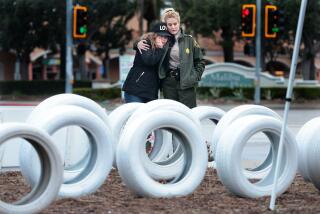Colleges to Build Data-Exchange Network
- Share via
SAN FRANCISCO — A group of universities in California said Friday that they are building their own information highway, which will exchange data from libraries and laboratories at least 100 times faster than the Internet.
The project will form a sort of virtual university, in which students can access books from distant libraries and take classes at other campuses. Along with expanding the resources available to students, the schools said the new network could help them save money by avoiding the duplication of resources.
They said the network, which will be up and running next year, will also be more reliable than today’s Internet.
“The electronic highway is faced with rush-hour traffic most of the day. We need reliable service delivery,” said M. Stuart Lynn, University of California associate vice president and the principal investigator for the project.
The network will be designed to connect campuses at speeds of more than 600 million bits per second. At that rate, a 30-volume encyclopedia could be transmitted in under one second.
Participating schools include seven campuses of the University of California, along with Caltech in Pasadena, California State University, Stanford and USC.
The schools are members of the Consortium for Education Network Initiatives in California, which earlier this week won a $3.8-million grant for the project from the National Science Foundation.
In addition to the statewide effort, major universities in California are also participating in a similar project to link more than 100 research universities across the country. They said they decided to separately link schools within California to ensure the state has the best technology to support its research and educational needs.
The network will also give more students virtual access to state-of-the art research tools, such as a sophisticated electron microscope at UC Riverside, or an advanced telescope in Hawaii that some California schools help manage. Medical researchers will be able to transmit images over the network for diagnosis and teaching purposes.
More to Read
Sign up for Essential California
The most important California stories and recommendations in your inbox every morning.
You may occasionally receive promotional content from the Los Angeles Times.










